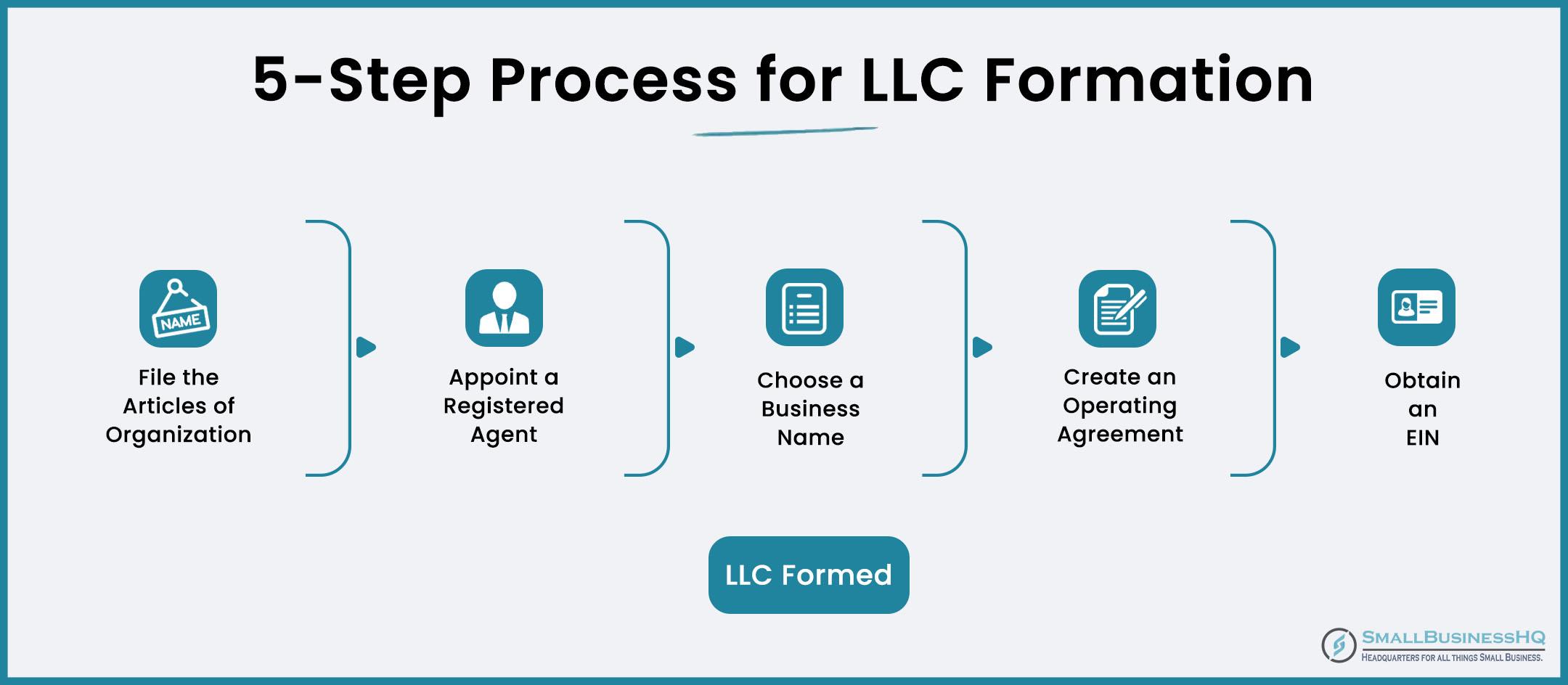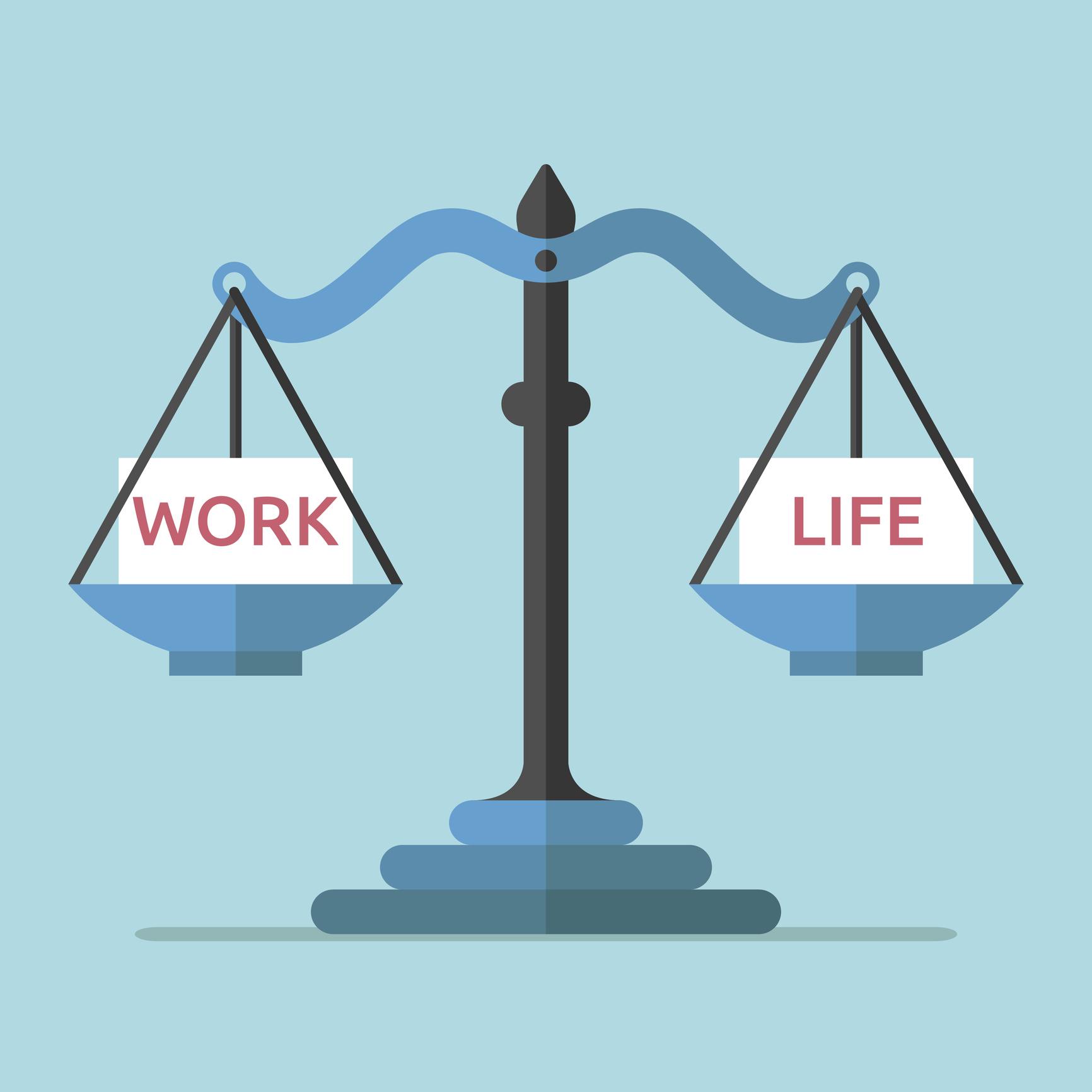
In today’s fast-paced world, the quest for work-life balance can often feel like chasing a mirage—just when you think you’ve got it figured out, something else pulls you back into the whirlwind of deadlines, responsibilities, and endless to-do lists. Have you ever found yourself working late into the night or feeling overwhelmed by the constant juggle of career and personal life? You’re not alone! Many of us have faced the daunting threat of burnout, that sneaky culprit that can turn our passion for work into a heavy burden. But fear not! There are smarter ways to reclaim your time and energy. In this article, we’ll share 11 practical and effective tips to help you establish a healthier balance between work and life. So, grab a cup of coffee, settle in, and let’s explore how you can create a more fulfilling and sustainable lifestyle—because you deserve it!
Understanding the Importance of Work Life Balance
In today’s fast-paced world, where the lines between work and personal life often blur, maintaining a healthy equilibrium is crucial. This balance is not just a nice-to-have; it significantly impacts your mental health, productivity, and overall satisfaction. When work takes precedence over personal time, stress levels can soar, leading to burnout—a state of mental, physical, and emotional exhaustion.
Having a clear boundary between work and personal life allows us to recharge and foster meaningful relationships outside of our professional roles. It’s essential to remember that we are not just workers; we are individuals with unique needs and passions. Embracing this duality can enhance our creativity and problem-solving abilities, making us not just better workers but also more fulfilled individuals.
Moreover, prioritizing personal time can lead to improved job performance. When you allow yourself to step away from work, whether it’s for a brief walk, a hobby, or simply spending time with loved ones, you return with a fresh perspective and renewed energy. This rejuvenation is key to being productive and innovative, which ultimately benefits employers and employees alike.
Consider these key aspects of work-life balance:
- Physical Health: Regular breaks and physical activity can reduce stress and improve focus.
- Mental Well-being: Time spent away from work can enhance creativity and mental clarity.
- Social Connections: Building and maintaining relationships outside of work fosters a support system that can mitigate stress.
- Job Satisfaction: A balanced life contributes to a more positive attitude toward work and increases overall job satisfaction.
Employers also play a pivotal role in fostering this balance. By promoting flexible work arrangements and encouraging employees to take their vacation days, companies can create a healthier work environment. Such practices not only demonstrate care for employees’ well-being but also result in higher retention rates and a more engaged workforce.
Furthermore, understanding that work-life balance is a personal journey is vital. Everyone’s equation looks different, and what works for one person may not suit another. Regularly assessing your own needs and being willing to adjust your approach can lead to a more satisfying and less stressful existence.
| Benefits of Work-Life Balance | Impact on Life |
|---|---|
| Reduced Stress | Improved Mental Health |
| Increased Productivity | Enhanced Job Performance |
| Better Relationships | Greater Life Satisfaction |
achieving a sustainable work-life balance is essential for both personal well-being and professional success. By recognizing its importance and actively working towards it, we can prevent burnout and create a life that is not only productive but also fulfilling.
Identifying the Signs of Burnout Before Its Too Late
Burnout often sneaks up on us, gradually eroding our passion and motivation. Recognizing the early signs can be your first line of defense against a complete breakdown. Here are some telltale symptoms to keep an eye on:
- Chronic Fatigue: Feeling drained and exhausted, even after a full night’s sleep, is a significant indicator. If you find yourself waking up tired, it might be time to reassess.
- Reduced Performance: A noticeable decline in your productivity and efficiency can indicate that stress is taking its toll. Tasks that used to be easy may begin to feel overwhelming.
- Emotional Drain: Increased irritability, anxiety, or sadness can signal emotional exhaustion. If the highs of your job are replaced with a sense of dread, it’s essential to take notice.
- Detachment: Feeling disconnected from your work or colleagues can be a red flag. When you no longer care about your job or the people you work with, it’s a sign to re-evaluate your situation.
- Physical Symptoms: Frequent headaches, gastrointestinal issues, or sleep disturbances can all manifest from prolonged stress and burnout.
To help clarify these signs, here’s a quick comparison of typical behaviors observed in individuals experiencing burnout versus those who maintain a healthy work-life balance:
| Burnout Signs | Healthy Balance |
|---|---|
| Constantly exhausted | Feeling energized by work and life |
| Neglecting self-care | Prioritizing physical and mental well-being |
| Feeling trapped or helpless | Embracing challenges and growth |
| Social withdrawal | Engaging with friends and colleagues |
It’s crucial to be proactive rather than reactive. If you notice any of these signs, take immediate action to correct your course. Consider scheduling regular breaks throughout your workday, setting firm boundaries between work and home life, and engaging in activities that rejuvenate you outside of work.
Remember, prevention is key. By staying attuned to your feelings and your body, you can catch the signs early and implement strategies to mitigate stress before it manifests into full-blown burnout. Your well-being should always come first, and recognizing when something’s off is the first step in reclaiming your balance.
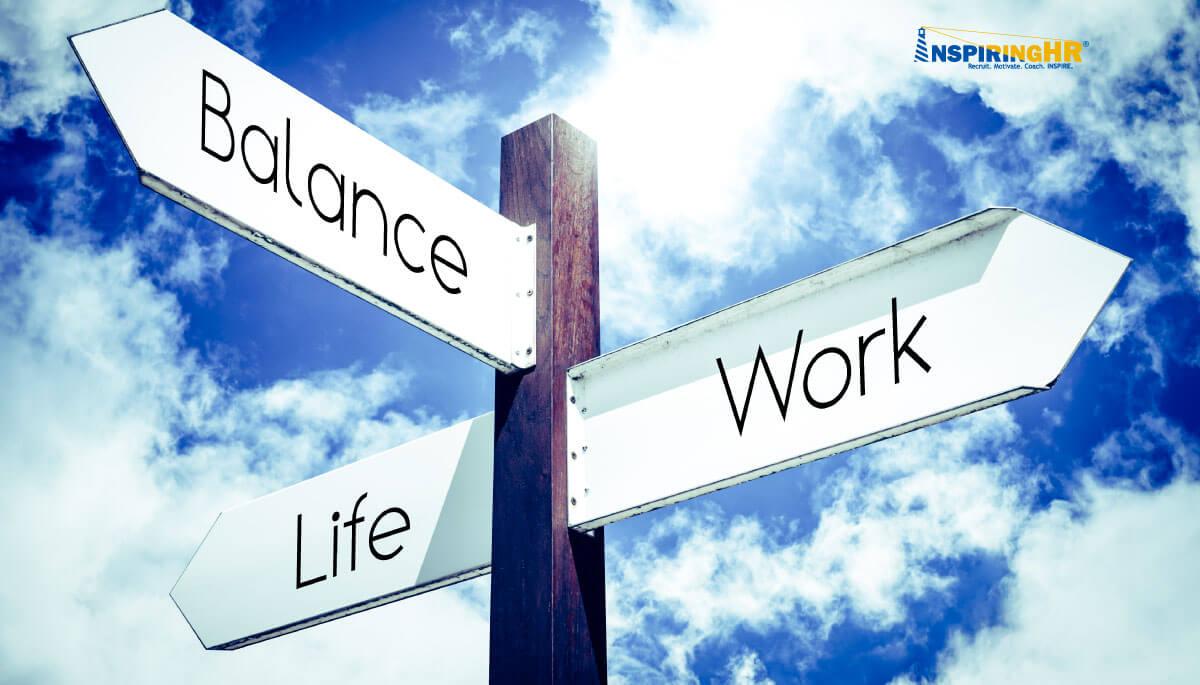
Setting Clear Boundaries Between Work and Personal Life
In today’s fast-paced work environment, the lines between work and personal life can easily blur. To maintain your sanity and well-being, it’s essential to establish clear boundaries that protect your personal time. Here are some effective strategies to help you create that separation:
- Designate Work Hours: Set specific hours during which you will be working. Communicate these hours clearly to your colleagues and stick to them. When the workday ends, shut down your computer and walk away.
- Create a Dedicated Workspace: Whether it’s a home office or a designated corner of your living room, having a specific area for work can mentally separate your professional and personal life.
- Utilize Technology Wisely: Use apps and tools that allow you to manage your work tasks without intruding into your personal time. Consider tools that help you schedule emails or set auto-responses when you’re off the clock.
- Learn to Say No: It’s okay to turn down requests for work, especially when it infringes on your personal time. Prioritize your well-being and don’t overcommit.
Implementing these boundaries not only helps in preventing burnout but also enhances your overall productivity. It’s about working smarter, not harder. Here are a few additional tips to consider:
- Schedule Breaks: Take regular breaks throughout your workday to recharge. Even short pauses can boost your productivity and keep you focused.
- Establish Evening Routines: Create rituals that signal the end of the workday, such as a walk, a workout, or reading. This helps your mind transition from work mode to personal time.
- Communicate Openly: Make sure your team knows when you’re available and when you’re not. Transparency builds respect for your boundaries.
You could also consider a table to summarize the benefits of setting boundaries:
| Benefit | Description |
|---|---|
| Reduces Stress | Clear boundaries help minimize the overwhelming feelings of having work constantly encroaching on personal time. |
| Improves Relationships | When you prioritize personal time, you can nurture relationships with family and friends, leading to a more fulfilling life. |
| Enhances Focus | With a defined separation, you can concentrate better on work tasks during work hours and enjoy personal activities during your downtime. |
Ultimately, setting clear boundaries is a proactive approach to achieving a healthy work-life balance. By prioritizing your personal life and establishing firm boundaries, you create an environment where both your professional and personal life can thrive. Remember, it’s not just about time management; it’s about energy management. Your well-being is worth the effort it takes to maintain these boundaries!
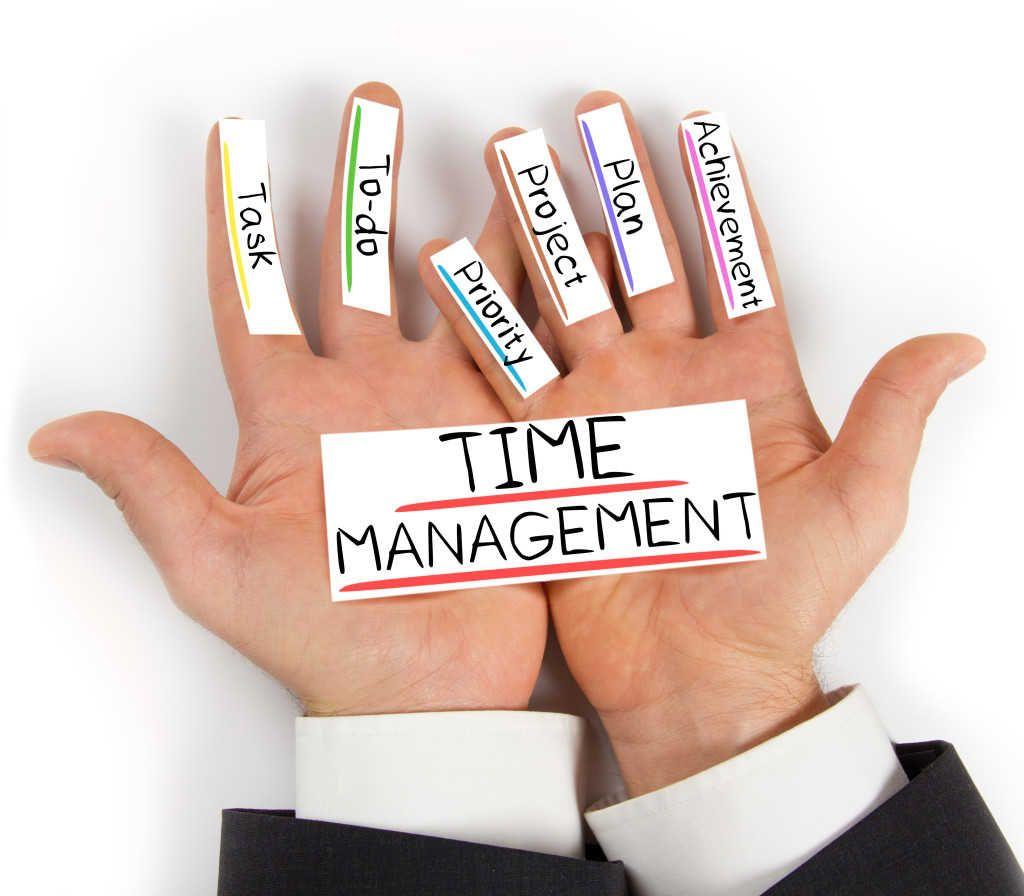
Mastering the Art of Time Management for a Balanced Day
Time management is an essential skill that can dramatically enhance your daily productivity while promoting a balanced lifestyle. When you master the art of managing your time effectively, you create more opportunities for personal and professional growth, ultimately steering clear of burnout.
To begin, it’s crucial to prioritize your tasks. Using a simple method like the Eisenhower Box can help you distinguish between what is urgent and important. This way, you can focus your energy on tasks that truly matter, avoiding the trap of putting out fires instead of planning for the future.
Another effective strategy is to set clear boundaries around your work hours. Whether you’re working from home or in an office, letting colleagues and family know your schedule will help minimize interruptions. Consider the following tips to maintain these boundaries:
- Designate a specific workspace.
- Use tools like calendars to block out work time.
- Communicate your availability to others.
Incorporating breaks into your schedule is also key. It may seem counterintuitive, but taking short, scheduled breaks can enhance your focus and efficiency. Research suggests that taking a 5-10 minute break every hour can refresh your mind, leading to improved productivity when you return to your tasks.
Consider adopting the Pomodoro Technique, which involves working for 25 minutes, followed by a 5-minute break. This structured method can help you maintain energy levels and concentration throughout the day.
Another vital aspect of time management is the ability to delegate tasks when possible. Whether at work or home, distributing responsibilities allows you to focus on high-priority projects. Make a list of tasks that others can help with, and don’t hesitate to ask for assistance. Remember, collaboration can lead to better outcomes and less stress for everyone involved.
Lastly, don’t underestimate the power of reflection. At the end of each day, take a few moments to review what you accomplished and identify areas for improvement. Creating a simple table can be an effective way to visualize your progress:
| Task | Status | Reflection |
|---|---|---|
| Project A | Completed | Good time management |
| Meeting with Team | Pending | Need to prepare more |
| Emails | Ongoing | Schedule time for responses |
By implementing these strategies, not only will you enhance your time management abilities, but you’ll also foster a more balanced and fulfilling lifestyle. Balancing work and personal life is an ongoing journey, and every step you take towards mastering your time is a step away from burnout.
Prioritizing Self-Care: The Key to Sustaining Energy
In our fast-paced world, it’s easy to overlook the importance of taking care of ourselves. Yet, prioritizing self-care is not just a luxury; it’s a necessity for maintaining our energy levels and overall well-being. When we neglect our needs, we risk burning out, which can lead to decreased productivity and increased stress. Let’s explore some strategies to implement self-care effectively.
Set Boundaries: Establishing clear boundaries between work and personal time is essential. Communicate your limits to colleagues and family, so everyone understands when you are available and when you need time to recharge. This can help prevent work from spilling over into your personal life.
Schedule “Me Time”: Just as you would schedule a meeting, block out time for yourself in your calendar. Whether it’s reading a book, taking a walk, or indulging in a hobby, having dedicated time for self-care will reinforce its importance in your life.
Practice Mindfulness: Incorporating mindfulness into your daily routine can elevate your self-care practice. Activities like meditation, deep breathing exercises, or yoga can help center your thoughts and reduce stress. These moments of stillness can rejuvenate your mind and body, making you more resilient to challenges.
Stay Active: Physical activity is a powerful form of self-care that fuels both the body and mind. Aim for at least 30 minutes of exercise most days of the week. Whether it’s a brisk walk, dancing, or hitting the gym, find what you enjoy and stick with it. Remember, the endorphins released during exercise are natural mood lifters!
Connect with Others: Social connections play a vital role in our emotional health. Make time to connect with friends and family regularly. Share your thoughts and experiences, or simply enjoy a laugh together. Relationships can be a wonderful source of support during stressful times.
Maintain a Balanced Diet: Fueling your body with nutritious foods is another fundamental aspect of self-care. Aim to include a variety of fruits, vegetables, lean proteins, and whole grains in your meals. Staying hydrated is equally important, so don’t forget to drink plenty of water throughout the day.
Get Enough Sleep: Sleep is the body’s natural way of healing and restoring energy. Prioritize getting 7-9 hours of quality sleep each night. Create a relaxing bedtime routine, limit screen time before bed, and maintain a comfortable sleeping environment to improve your sleep quality.
By integrating these self-care practices into your daily life, you’ll not only preserve your energy levels but also enhance your overall quality of life. Remember, taking care of yourself isn’t selfish; it’s essential for long-term success and happiness.
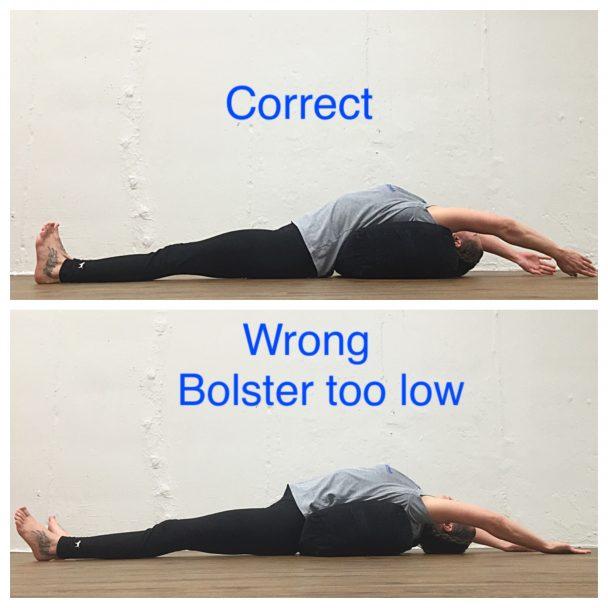
Embracing Flexibility: Working Smarter, Not Harder
In today’s fast-paced world, the ability to adapt and be flexible is essential for maintaining a healthy work-life balance. Embracing flexibility allows us to work smarter, not harder, which can significantly reduce the risk of burnout. Here are some practical strategies that highlight the importance of flexibility in your professional life:
- Prioritize Tasks: Identify what truly matters. Use techniques like the Eisenhower Matrix to categorize tasks by urgency and importance. This way, you can focus on high-impact activities without getting bogged down by less critical work.
- Set Boundaries: Create clear boundaries between work and personal time. Let coworkers know your availability and stick to it. This helps you recharge and maintain a better balance.
- Embrace Remote Work: If your job allows, consider working from home or flexible locations. This can save commute time and provide a more comfortable work environment conducive to productivity.
- Schedule Breaks: Don’t underestimate the power of a quick break. Schedule short breaks throughout your day to reset and recharge your mind. Even a five-minute walk can boost your creativity and focus.
- Practice Mindfulness: Incorporate mindfulness techniques into your daily routine. Simple practices like deep breathing or meditation can help reduce stress and increase your capacity to adapt to changes.
Flexibility also extends to how we manage our workload. By being open to adjusting your plans based on changing circumstances or priorities, you can maintain your productivity without feeling overwhelmed. Here’s a simple table illustrating how flexibility can transform your work approach:
| Traditional Approach | Flexible Approach |
|---|---|
| Rigid schedules | Fluid work hours |
| Sticking to a single task | Switching tasks as needed |
| Working long hours | Short, focused work sessions |
Building a culture of flexibility can also be beneficial for teams. Encourage open communication where team members feel comfortable sharing their workload challenges. This collaborative environment fosters support and allows for shared problem-solving. When everyone is on board with flexibility, it reduces stress levels and promotes a healthier work atmosphere.
Lastly, remember that flexibility is not just about changing your schedule; it’s also about being open to new ideas and approaches. Whether it’s learning a new tool that enhances efficiency or adopting different methodologies, staying adaptable can lead to innovative solutions and prevent stagnation in your work life.

The Power of Saying No: Protecting Your Time and Energy
In a fast-paced world driven by constant demands and expectations, the ability to say ”no” becomes a superpower. It’s not just about turning down requests; it’s about protecting your most valuable resources—your time and energy. When you embrace this skill, you empower yourself to focus on what truly matters, allowing for greater productivity and overall well-being.
Many of us feel obligated to say yes, fearing the consequences of disappointing others or missing out on opportunities. However, saying yes too often can lead to overwhelming workloads that contribute to stress and burnout. To reclaim your time, consider the following:
- Assess Your Priorities: Before committing to new tasks, take a moment to evaluate whether they align with your personal and professional goals.
- Practice Assertiveness: Politely declining requests can be done without feeling guilty. Use phrases like “I appreciate the offer, but I need to pass this time.”
- Set Boundaries: Clearly define your limits regarding work hours and commitments. Communicate these boundaries to your colleagues and family.
By establishing clear guidelines for yourself, you create a structured environment where saying no feels less daunting. This mindset allows you to prioritize tasks that add value to your life, whether they are personal projects or essential work responsibilities.
To help you visualize the impact of your commitments, you can create a simple decision-making table:
| Request | Alignment with Goals | Energy Cost | Decision |
|---|---|---|---|
| Team Meeting | High | Medium | Yes |
| After-work Happy Hour | Low | High | No |
| Volunteer Opportunity | Medium | Medium | Consider |
Regularly revisiting your commitments through such evaluations can streamline your decision-making process. Moreover, developing a routine of deliberate reflection on your choices enables you to identify recurring patterns where you habitually overextend yourself.
Remember, saying no doesn’t mean you are selfish; it means you are prioritizing your well-being. It opens up space for meaningful engagements and allows you to invest your energy where it counts the most. By mastering this skill, you not only enhance your productivity but also cultivate a life that feels fulfilling and balanced.
Ultimately, the power of saying no empowers you to take control of your time and energy, ensuring that you can pursue your passions and responsibilities without sacrificing your mental health. It’s about making conscious choices that support your journey to a more sustainable work-life balance.

Creating a Supportive Work Environment to Reduce Stress
Creating a workplace where employees feel valued and supported is essential for reducing stress and promoting overall well-being. A supportive environment can significantly enhance productivity and morale, making it easier for individuals to manage their tasks and responsibilities.
One of the first steps in fostering a positive atmosphere is to encourage open communication. When employees feel comfortable sharing their thoughts and concerns, it not only builds trust but also allows management to address issues before they escalate. Regular check-ins or feedback sessions can make a significant difference in how employees perceive their work environment.
Another effective strategy is to promote collaboration and teamwork. When employees work together, they can share the workload and support each other through challenges. Consider implementing team-building activities that encourage bonding and cooperation, which can ultimately lead to a more cohesive workplace.
Recognizing and appreciating employees’ contributions is also crucial. Simple acts of acknowledgment, such as verbal praise or small rewards, can go a long way in boosting morale. When team members feel appreciated, they are more likely to stay motivated and engaged with their work.
Here are some practical ways to create a supportive work culture:
- Flexible Work Arrangements: Allow employees to have flexible schedules or remote work options to help them balance their personal and professional lives.
- Wellness Programs: Implement programs that focus on physical and mental health, such as yoga classes, meditation sessions, or stress management workshops.
- Clear Expectations: Make sure goals and responsibilities are clearly defined to prevent confusion or overwhelm.
- Resources for Help: Provide access to counseling services or stress relief resources to support employee mental health.
Implementing these practices can significantly reduce workplace stress and increase employee satisfaction. Remember, a supportive environment is not just beneficial for individuals; it also leads to better organizational outcomes. Happy employees are more productive, creative, and committed to their work.
| Supportive Practices | Benefits |
|---|---|
| Open Communication | Builds trust and prevents misunderstandings |
| Team Collaboration | Encourages sharing of workloads and ideas |
| Employee Recognition | Boosts motivation and job satisfaction |
| Wellness Initiatives | Promotes overall health and reduces stress |
By prioritizing a supportive work environment, organizations can cultivate a culture of well-being that not only enhances employee happiness but also contributes to long-term success. The focus should always be on creating a space where everyone feels empowered to thrive.

Engaging in Regular Physical Activity for Mental Clarity
Incorporating physical activity into your daily routine can be a game-changer for achieving mental clarity and overall well-being. Engaging in regular exercise not only boosts your physical health but also enhances your cognitive function and emotional resilience. It’s a natural antidote to stress, providing a much-needed break from the hustle and bustle of daily life.
When you engage in physical activity, your body releases endorphins, often referred to as the “feel-good” hormones. These endorphins act as natural painkillers and mood elevators, helping to reduce feelings of anxiety and depression. This means that a brisk walk, a yoga session, or a gym workout can significantly improve your mood and mental outlook.
Here are some effective ways to incorporate physical activity into your busy schedule:
- Morning Walks: Start your day with a 20-minute walk. It’s a great way to clear your mind before tackling your daily tasks.
- Lunchtime Stretch: Utilize part of your lunch break for a quick stretching routine or a short jog. This can re-energize you for the rest of the day.
- After Work Workouts: Schedule time after work for a fitness class or a run. This helps you unwind and transition from work mode to home mode.
- Weekend Adventures: Take advantage of weekends to explore activities like hiking, biking, or dancing. It’s a fun way to stay active and socialize at the same time.
Creating a consistent exercise routine can be incredibly beneficial. Here’s a simple weekly plan to help you get started:
| Day | Activity | Duration |
|---|---|---|
| Monday | Yoga | 30 minutes |
| Tuesday | Cardio | 20 minutes |
| Wednesday | Strength Training | 30 minutes |
| Thursday | Walking | 25 minutes |
| Friday | Dance Class | 1 hour |
| Saturday | Hiking | 2 hours |
| Sunday | Rest/Light Stretching | 30 minutes |
Remember, the key is to find activities that you genuinely enjoy. This makes it easier to stay committed and allows you to view physical activity as a rewarding part of your day rather than a chore. Whether it’s playing a team sport, joining a dance class, or simply taking the stairs instead of the elevator, every little bit counts.
By prioritizing physical activity, you not only enhance your mental clarity but also improve your productivity, creativity, and overall quality of life. So lace up those sneakers, get moving, and watch how your mental fog begins to lift, making way for brighter ideas and a more balanced life.
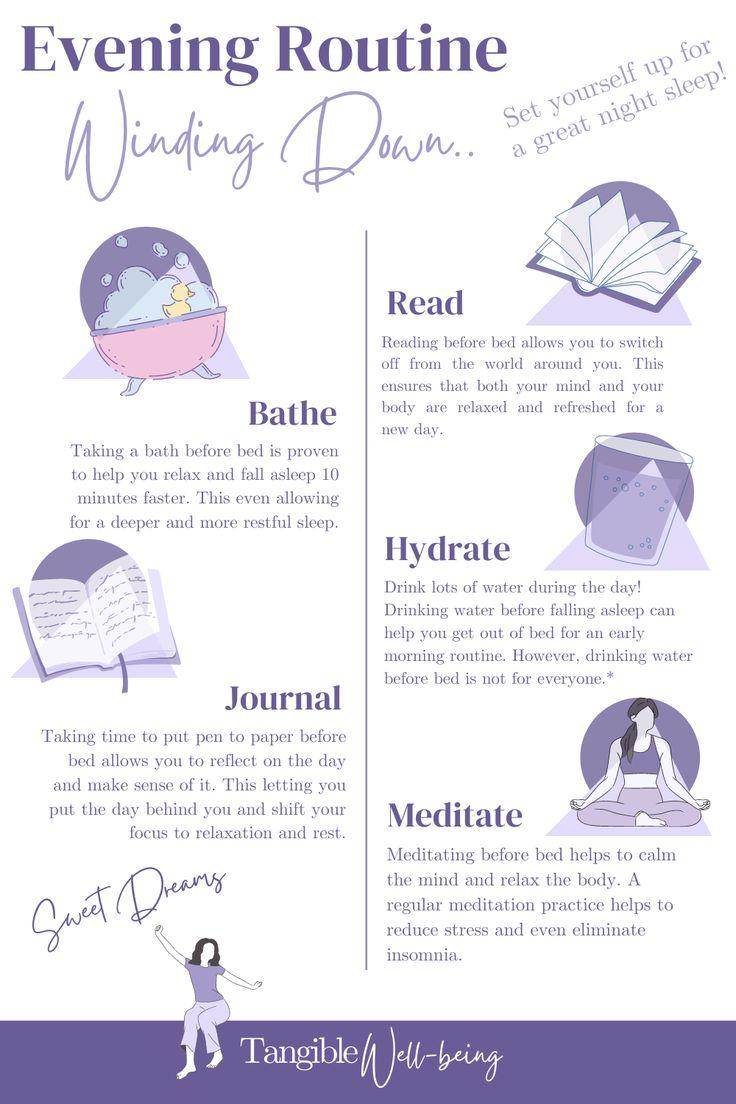
Establishing a Relaxing Evening Routine to Wind Down
Creating a soothing atmosphere in the evening can be a game-changer for your mental health and overall well-being. A well-crafted routine signals to your body that it’s time to transition from the hustle of the day to a more tranquil state. Here are some creative ways to establish a relaxing routine that helps you wind down effectively.
Dim the Lights: Lowering the lights in your space can help create a calming environment. Consider using soft, warm-colored bulbs or even candles for a more intimate setting. This simple act can trigger your brain to prepare for relaxation.
Engage Your Senses: Incorporate elements that appeal to all your senses. You might want to:
- Listen to calming music or nature sounds.
- Diffuse essential oils like lavender or chamomile.
- Savor a warm herbal tea that promotes relaxation.
Unplug from Technology: Set a specific time to disconnect from screens. Engaging with technology can keep your mind racing. Instead, reach for a book or a journal to help you reflect on your day or dive into a fictional world.
Incorporate Gentle Movement: Light stretching or yoga can ease tension in your body after a long day. Even a short, 10-minute routine can work wonders for your stress levels and promote better sleep.
Create a Sleep Sanctuary: Your bedroom should be a haven of peace. Consider maintaining a clean, clutter-free space that invites tranquility. Use calming colors and soft fabrics to enhance your environment.
| Evening Routine Elements | Benefits |
|---|---|
| Dim Lights | Promotes a state of relaxation |
| Herbal Tea | Soothes the mind and body |
| Gentle Yoga | Reduces muscle tension |
| Technology Detox | Improves focus and mental clarity |
Mindfulness and Meditation: Spending just a few minutes in mindfulness or meditation can help you clear your mind of the day’s thoughts. Focus on your breath or practice gratitude for a few moments to cultivate a sense of peace.
Prepare for Tomorrow: Taking a few minutes to prepare for the next day can alleviate anxiety. Lay out your clothes, create a to-do list, or pack your lunch. This practice can help you feel more organized and less stressed about the day ahead.

Finding Meaningful Hobbies Outside of Work
In today’s fast-paced world, it’s easy to get lost in the demands of work and forget to nurture the things that bring joy and fulfillment. Engaging in meaningful hobbies outside of your job can greatly enhance your well-being and provide a counterbalance to work stress. Here are some ideas to spark your creativity and guide you in finding hobbies that resonate with your passions.
First, consider exploring activities that align with your interests and values. Ask yourself what you enjoyed doing as a child or what you’ve always wanted to try. Some examples include:
- Gardening: Cultivating plants can be a therapeutic and rewarding experience.
- Photography: Capturing moments can help you see the beauty in everyday life.
- Writing: Journaling, blogging, or crafting stories can be an excellent outlet for self-expression.
- Cooking: Experimenting with new recipes can be both creative and fulfilling.
Another great way to discover new hobbies is through community involvement. Joining local clubs or groups can introduce you to like-minded individuals and foster a sense of belonging. Whether it’s a book club, a hiking group, or a volunteering opportunity, connecting with others can lead to new friendships and shared experiences.
Don’t overlook the advantages of learning something new. Educational hobbies, such as taking up a musical instrument or enrolling in a painting class, not only provide enjoyment but also enhance your skills. Here’s a quick comparison of some popular hobbies:
| Hobby | Benefits | Time Commitment |
|---|---|---|
| Knitting | Stress relief, fine motor skills | Variable |
| Cycling | Physical fitness, social interaction | 1-3 hours/week |
| Cooking | Creativity, nutrition knowledge | Variable |
| Journaling | Self-reflection, emotional clarity | 15-30 minutes/day |
Additionally, consider how your chosen hobbies can help you unwind after a busy workday. Activities like yoga or meditation can provide a peaceful escape, while learning a new skill can provide a sense of achievement. Reflect on how different hobbies make you feel and choose those that truly resonate with you.
Lastly, prioritize your leisure time. Schedule your hobbies just as you would important meetings. This commitment ensures you carve out time for yourself and prevent work from overtaking your life. Remember, nurturing your interests outside of work isn’t just a luxury; it’s essential for a balanced and fulfilling life.
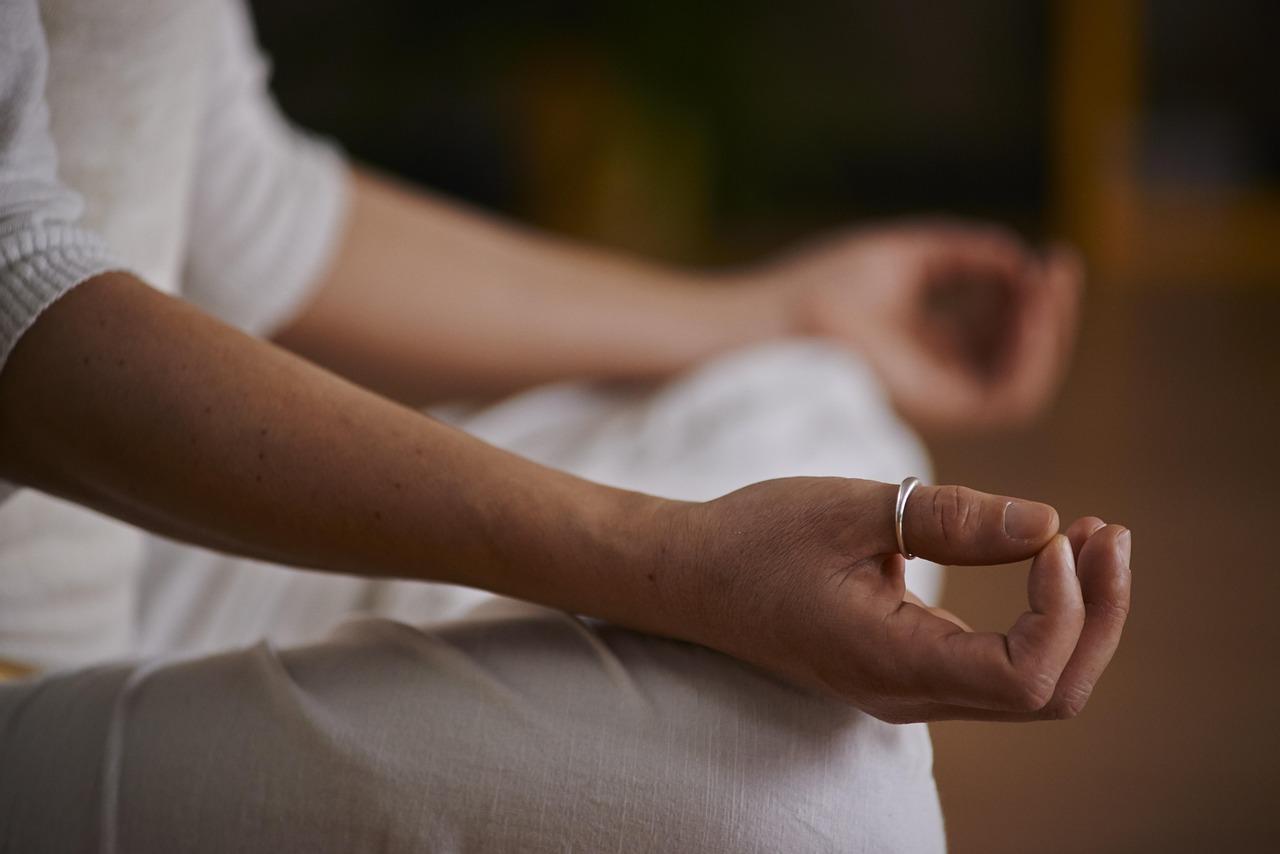
The Impact of Mindfulness Practices on Daily Life
In today’s fast-paced world, it can be easy to get caught up in the whirlwind of daily responsibilities, leaving little room for personal well-being. This is where mindfulness practices can step in and revolutionize your routine. By embracing mindfulness, you can transform not only your work-life balance but also your overall mental and emotional health.
Mindfulness encourages a heightened state of awareness, allowing you to reconnect with the present moment. This shift in focus can lead to several significant benefits in your daily life:
- Enhanced Focus: Practicing mindfulness helps improve concentration, making it easier to tackle tasks without distractions.
- Reduced Stress: Learning to be present can alleviate anxiety and stress, enabling you to handle challenging situations more effectively.
- Improved Emotional Regulation: Mindfulness fosters a greater understanding of your emotions, allowing you to respond rather than react.
- Better Relationships: Being fully present in conversations can enhance connections with colleagues and loved ones.
Incorporating mindfulness into your daily routine doesn’t require hours of meditation. Simple practices can easily fit into your busy schedule. For example:
| Practice | Description |
|---|---|
| Mindful Breathing | Spend a few minutes focusing solely on your breath. Inhale deeply, hold, and exhale slowly. |
| Gratitude Journaling | Take a moment each day to jot down three things you’re grateful for. |
| Body Scan | Close your eyes and mentally scan your body from head to toe, noticing any tension. |
Even just a few moments of mindfulness can have a profound impact. When you start your day with a mindful intention, you set a positive tone that can carry through to every task you undertake. You may find that you approach challenges with a clearer perspective and a calm demeanor, thereby reducing the potential for burnout.
Moreover, mindfulness fosters a sense of appreciation for small moments in life. Whether it’s savoring your morning coffee or enjoying a brief walk during lunch, being present allows you to find joy in the mundane. This subtle shift can lead to greater life satisfaction overall.
While the benefits of mindfulness are substantial, remember that the goal is not perfection but progress. Allow yourself to be human in this journey. Embrace the ebbs and flows of your practice, and recognize that each moment spent practicing mindfulness contributes to a more balanced and fulfilling life.

Leveraging Technology to Enhance Productivity and Balance
Maximizing Efficiency with Tools and Apps
Today’s technology provides a plethora of tools designed to enhance productivity while also promoting a healthier work-life balance. Incorporating the right apps can streamline tasks, reduce time spent on repetitive activities, and free up mental space, allowing you to focus on what truly matters.
Consider using:
- Task Management Tools: Platforms like Trello or Asana help you organize tasks visually, making it easier to prioritize and complete projects without feeling overwhelmed.
- Time Tracking Apps: Tools such as Toggl or Clockify can help you understand where your time goes, enabling you to make adjustments that lead to more productive work hours.
- Communication Software: Slack or Microsoft Teams can enhance collaboration while reducing the need for lengthy email chains, keeping communication clear and concise.
Automate Repetitive Tasks
Automation is a game changer when it comes to reducing burnout. By automating mundane tasks, you can reclaim valuable time and energy. Look into tools that can handle:
- Email Responses: Use automated replies for common inquiries or set up templates that allow for quicker responses.
- Social Media Scheduling: Platforms like Buffer or Hootsuite enable you to plan and automate your posts, ensuring a consistent online presence without the daily hassle.
- Data Entry: Software like Zapier can link your apps and automate workflows, reducing the need for manual data entry.
Set Boundaries with Technology
It’s essential to create boundaries with technology to maintain balance. Leverage features on your devices to help you disconnect and recharge:
- Do Not Disturb Mode: Utilize this setting during personal time to avoid distractions from notifications.
- Designated Work Hours: Use calendar tools to set specific work hours that are clear to your team, encouraging respect for your personal time.
- Mindfulness Apps: Incorporate apps like Headspace or Calm during breaks to refresh your mind and stay centered.
Utilize Cloud-Based Solutions
Cloud technology enables you to access your work from anywhere, making it easier to maintain flexibility in your schedule. Here’s why it’s beneficial:
| Benefit | Description |
|---|---|
| Access from Anywhere | Work remotely and access documents as needed without being tied to the office. |
| Collaboration | Share files with colleagues in real-time, enhancing teamwork and efficiency. |
| Automatic Backups | Your work is saved automatically, reducing the risk of losing important files. |
Embrace Virtual Assistants
Virtual assistants can take over tasks that consume your time, allowing you to focus on more critical work. Here’s how they can help:
- Scheduling Appointments: They can manage your calendar, ensuring you have time for both work and personal commitments.
- Research Tasks: Offloading research can save hours, letting you concentrate on implementation rather than information gathering.
- Administrative Work: Delegate routine administrative tasks, freeing you up for creative and strategic thinking.

Seeking Professional Help When Work Life Balance Feels Out of Reach
When the scales of work and life seem to tip unfavorably, it can be tough to navigate. Many individuals find themselves in a cycle of stress that feels overwhelming, and seeking professional help may be a necessary step. Whether it’s talking to a counselor, a life coach, or a therapist, having a supportive figure can provide clarity and guidance. Here are a few reasons why reaching out for professional help can be transformative:
- Objective Perspective: A professional can offer a fresh perspective on your situation, helping you to identify patterns and behaviors that may be contributing to your imbalance.
- Tools and Techniques: Mental health professionals can provide you with practical tools and techniques to manage stress effectively, allowing you to create a more sustainable work-life balance.
- Accountability: Regular sessions with a coach or therapist can keep you accountable in making the changes you need to prioritize your well-being.
- Stress Management: Professionals can help you develop personalized strategies to manage stress, ensuring that it doesn’t spill over into your personal life.
Many people hesitate to seek help due to stigma or the belief that they should be able to handle their challenges on their own. However, reaching out for help is a sign of strength and self-awareness. It shows that you are proactive about your mental health and well-being. A skilled professional can help you pinpoint triggers that affect your work-life balance and develop effective coping mechanisms.
Here’s a simple table outlining the signs that it might be time to seek help:
| Sign | Description |
|---|---|
| Constant Stress | If you feel stressed or anxious most days, it may be time to talk to someone. |
| Physical Symptoms | Experiencing headaches, fatigue, or digestive issues without a clear medical cause can be a sign of burnout. |
| Loss of Interest | If you find that activities you once enjoyed no longer bring joy, it may indicate deeper issues. |
| Isolation | Withdrawing from friends, family, or activities can signify a need for professional support. |
Ultimately, it’s essential to understand that asking for help is not a sign of weakness; rather, it is an empowering step towards regaining control over your life. Whether it’s a few sessions or ongoing support, the right professional can help you build a healthier relationship with work and life. Empower yourself to take that next step—your future self will thank you.
Frequently Asked Questions (FAQ)
Q&A: 11 Work-Life Balance Tips to Avoid Burnout
Q: Why is work-life balance important?
A: Work-life balance is essential because it helps you manage your time effectively, reducing stress and preventing burnout. When you find that sweet spot between your job and personal life, you’re not just happier; you’re also more productive and creative. This balance allows you to recharge, which ultimately benefits both your professional and personal life.
Q: What’s the first step to achieving work-life balance?
A: The first step is to assess your current situation. Take a moment to reflect on how much time you’re dedicating to work versus personal activities. Are you constantly checking emails after hours? Are your weekends consumed by work-related tasks? Understanding where you stand is crucial for making effective changes.
Q: Can you share a practical tip to improve time management?
A: Absolutely! Try the “Pomodoro Technique.” This method involves working for 25 minutes straight, then taking a 5-minute break. After four rounds, take a longer break of 15-30 minutes. This not only boosts your productivity but also gives your mind a chance to relax. You’ll be amazed at how much more focused and energized you feel!
Q: How can setting boundaries help prevent burnout?
A: Setting boundaries is like creating a protective barrier around your personal time. By clearly defining when you’re “at work” and when you’re “off the clock,” you establish a healthier routine. This can mean turning off notifications after hours or setting specific times to check emails. Boundaries help you stay present in your personal life, reducing stress and leading to a more balanced lifestyle.
Q: Is it okay to say no at work?
A: Yes, saying no is not only okay; it’s necessary for your well-being! If you’re already overwhelmed, taking on more tasks can lead to burnout. Learn to assess your workload and prioritize your responsibilities. Politely declining additional tasks when you’re already stretched thin is a sign of strength, not weakness.
Q: What role does self-care play in work-life balance?
A: Self-care is vital for maintaining your mental and physical health. It’s about making time for activities that rejuvenate you—whether that’s exercising, meditating, or simply enjoying a hobby. When you prioritize self-care, you enhance your resilience against stress and improve your overall quality of life.
Q: Can technology be a friend or foe in achieving work-life balance?
A: It can be both! Technology provides tools that can help you stay organized and efficient, like productivity apps or calendar reminders. However, it can also lead to work creeping into your personal life, especially with constant notifications. The key is to use technology mindfully—set boundaries and utilize tools that enhance your time management instead of hindering it.
Q: How can I ensure that I take regular breaks during the workday?
A: Scheduling breaks is essential! Just like you block out meetings, set aside time for breaks on your calendar. Whether it’s a quick walk, a coffee break, or a few minutes of stretching, making breaks part of your routine can significantly boost your focus and energy levels, making the workday more manageable.
Q: What should I do if I feel overwhelmed despite my efforts?
A: First, don’t be hard on yourself—feeling overwhelmed happens to the best of us! If you find that your current strategies aren’t helping, consider speaking with a mentor or a professional coach. Sometimes, an external perspective can provide you with new insights and strategies to better manage your time and stress levels.
Q: How can I create a supportive work environment?
A: Start by fostering open communication with your team. Encourage discussions about mental health and work-life balance. Share your own experiences and strategies. When everyone feels comfortable discussing these topics, it cultivates a culture where seeking help and supporting one another becomes the norm.
Q: Any final advice for maintaining work-life balance?
A: Remember that achieving work-life balance is a continuous journey, not a destination. Regularly reassess your priorities and be willing to adjust your strategies. Celebrate small victories and don’t hesitate to seek help when needed. You deserve a fulfilling life, both at work and outside of it!
Concluding Remarks
As we wrap up our journey through these 11 smart work-life balance tips, remember that the quest for harmony between your personal and professional life is an ongoing adventure. It’s not just about managing time; it’s about nurturing your well-being, boosting your productivity, and ultimately, creating a life you love.
Implementing even a few of these strategies can make a world of difference. Imagine waking up each day feeling energized, focused, and ready to tackle whatever comes your way—both at work and in your personal life. It’s not just a dream; it can be your reality!
So, take a moment to reflect on what truly matters to you. Prioritize your health, build boundaries, and don’t be afraid to unplug when you need to. Your happiness and fulfillment are worth it, and you deserve to thrive in every aspect of your life.
Let’s commit to making these changes together, one step at a time. Your future self will thank you! Now, go ahead and take action—after all, balance isn’t just a goal; it’s a lifestyle. Cheers to a more balanced, less burnt-out you!



